A lag plot of fpp2::ausbeer from 1992 onwards can be produced with:
library(fpp3)
#> ── Attaching packages ──────────────────────────────────────────── fpp3 0.4.0 ──
#> ✓ tibble 3.1.2 ✓ tsibble 1.0.1
#> ✓ dplyr 1.0.6 ✓ tsibbledata 0.3.0
#> ✓ tidyr 1.1.3 ✓ feasts 0.2.1.9000
#> ✓ lubridate 1.7.10 ✓ fable 0.3.1
#> ✓ ggplot2 3.3.3.9000
#> ── Conflicts ───────────────────────────────────────────────── fpp3_conflicts ──
#> x lubridate::date() masks base::date()
#> x dplyr::filter() masks stats::filter()
#> x tsibble::intersect() masks base::intersect()
#> x tsibble::interval() masks lubridate::interval()
#> x dplyr::lag() masks stats::lag()
#> x tsibble::setdiff() masks base::setdiff()
#> x tsibble::union() masks base::union()
as_tsibble(fpp2::ausbeer) %>%
filter(year(index) >= 1992) %>%
gg_lag(value)
#> Registered S3 method overwritten by 'quantmod':
#> method from
#> as.zoo.data.frame zoo

This gives the same output as was given from the gglagplot() function.
library(fpp2)
#> ── Attaching packages ────────────────────────────────────────────── fpp2 2.4 ──
#> ✓ forecast 8.14 ✓ expsmooth 2.3
#> ✓ fma 2.4
#>
#>
#> Attaching package: 'fpp2'
#> The following object is masked from 'package:fpp3':
#>
#> insurance
gglagplot(window(ausbeer, start = 1992))

There is no need to pivot the quarters into columns of the data. The tsibble
format has each column being a different variable (in this case the amount
of beer produced in Australia).
The y argument is used to specify which column to plot, and the separation
of seasonal periods is controlled using the period argument. The default
here will choose a common seasonal window, which in this case is
period = "1 year" to show the quarters in a year separately.
Created on 2021-06-15 by the reprex package (v2.0.0)

